-
 bitcoin
bitcoin $109667.069529 USD
-3.03% -
 ethereum
ethereum $3936.685804 USD
-4.07% -
 tether
tether $1.000493 USD
0.01% -
 xrp
xrp $2.771823 USD
-4.74% -
 bnb
bnb $957.805027 USD
-5.34% -
 solana
solana $196.735100 USD
-6.68% -
 usd-coin
usd-coin $0.999727 USD
-0.01% -
 dogecoin
dogecoin $0.227355 USD
-5.12% -
 tron
tron $0.335205 USD
-0.81% -
 cardano
cardano $0.779256 USD
-3.59% -
 ethena-usde
ethena-usde $0.999900 USD
-0.06% -
 hyperliquid
hyperliquid $42.492095 USD
-6.61% -
 chainlink
chainlink $20.501853 USD
-4.34% -
 avalanche
avalanche $28.952606 USD
-11.21% -
 stellar
stellar $0.356038 USD
-3.93%
What does a large-volume break below platform support mean? Is a stop-loss necessary?
A high-volume break below platform support signals strong bearish conviction, often triggering stop-losses and marking a potential trend reversal in crypto markets.
Sep 20, 2025 at 08:00 am
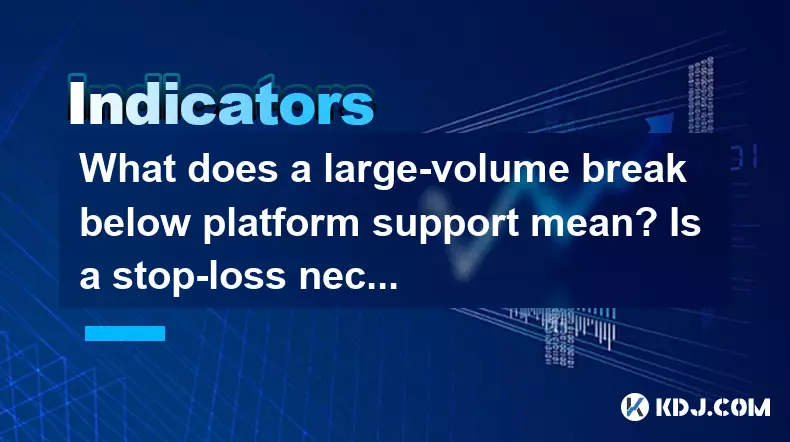
Understanding Large-Volume Breaks Below Platform Support
1. A large-volume break below platform support signals strong selling pressure in the cryptocurrency market. When price has been consolidating within a defined range—commonly referred to as a 'platform'—and suddenly drops on high trading volume, it often indicates institutional or whale-level participation. This kind of move is not easily reversed and suggests that bearish sentiment has taken control.
2. The platform support level typically represents a zone where buyers previously stepped in consistently. Once this level is breached with significant volume, it invalidates prior bullish assumptions. Traders who had positioned themselves expecting a bounce now face losses, leading to further downside momentum due to stop-loss triggers and short entries.
3. In technical terms, such breaks are considered confirmation of trend reversal or continuation depending on context. If the asset was already in a downtrend before forming the platform, the breakdown confirms bearish dominance. If it occurred after an uptrend, it may mark the start of a deeper correction or full reversal.
4. Volume plays a critical role in validating the strength of the breakdown. A low-volume drop might be a false breakout, easily reclaimed. However, a surge in volume during the break increases its reliability. On-chain data and order book analysis can help confirm whether the volume spike corresponds with real sell-side aggression.
The Role of Stop-Loss Orders in Volatile Markets
1. Using a stop-loss is essential when trading volatile assets like cryptocurrencies. Without one, traders expose themselves to potentially catastrophic drawdowns, especially during flash crashes or coordinated liquidation events. Even experienced traders cannot predict every sudden shift caused by macro news or exchange-specific anomalies.
2. Stop-loss orders act as automatic exit mechanisms when price moves against a position beyond a predetermined point. They help preserve capital and maintain emotional discipline. In fast-moving markets, reacting manually is often too slow; automation ensures timely execution even during off-hours.
p>3. Some traders avoid stop-losses due to concerns about being 'stopped out' by wicks or spoofing attacks. While valid, these risks can be mitigated through strategic placement—such as setting stops slightly below key support zones rather than directly at price levels vulnerable to manipulation.
4. Advanced traders may use trailing stop-losses to lock in profits while allowing room for normal volatility. These dynamic stops adjust with price movement, offering protection without premature exits during healthy pullbacks. Pairing them with time-based filters or volume thresholds adds another layer of robustness.
Market Psychology Behind Breakdowns
1. A breakdown on high volume reflects a shift in market psychology. Prior confidence in upward momentum erodes as sellers overpower buyers. Retail participants often hesitate during such transitions, hoping for a rebound, while more informed players accelerate their exits or initiate short positions.
2. Fear becomes dominant once the platform support fails. Social media channels, forums, and trading groups begin reflecting growing pessimism. This feedback loop amplifies selling pressure, creating cascading liquidations across leveraged long positions.
3. Liquidity pools around former support levels get absorbed quickly during breakdowns. Market makers and algorithmic systems detect the change in structure and reposition accordingly, often adding downward pressure by flipping those zones into resistance.
4. The speed and volume of the drop determine how deeply entrenched the new bearish narrative becomes. Rapid collapses tend to induce panic, whereas gradual erosion may allow for consolidation and potential recovery attempts—though the latter is less common after definitive high-volume breaches.
Frequently Asked Questions
What causes platform support to fail?Platform support fails when demand dries up and supply overwhelms buying interest. This often happens after prolonged consolidation, where accumulated sell orders are triggered simultaneously, especially if negative catalysts like regulatory rumors or exchange hacks emerge.
Can price return above broken support?Yes, but the zone usually transforms into resistance. Reclaiming lost ground requires strong buying conviction and follow-through volume. Many failed breakdowns see price retest the old support, only to reverse again under renewed selling pressure.
Where should I place my stop-loss after a breakdown?Place your stop-loss below the recent swing low created after the breakdown, not directly at the broken support. This reduces vulnerability to noise and short-term spikes while still protecting against extended downside.
Do all high-volume breakdowns lead to further declines?Not always. Some breakdowns occur as part of a shakeout before a larger upward move. Context matters—evaluate the broader trend, fundamentals, on-chain metrics, and overall market conditions before assuming continued weakness.
Disclaimer:info@kdj.com
The information provided is not trading advice. kdj.com does not assume any responsibility for any investments made based on the information provided in this article. Cryptocurrencies are highly volatile and it is highly recommended that you invest with caution after thorough research!
If you believe that the content used on this website infringes your copyright, please contact us immediately (info@kdj.com) and we will delete it promptly.
- AlphaTON's Bold Bet: Toncoin, Balance Sheets, and the Future of Digital Treasuries
- 2025-09-27 04:45:15
- Crypto Kidnapping in Minnesota: A New York Minute Breakdown of the $8 Million Heist
- 2025-09-27 04:25:14
- Avalanche, RUVI, and the Altcoin Rush: What's Fueling the Fire?
- 2025-09-27 04:25:14
- Ripple's RLUSD Takes Center Stage: Bybit Listing and Derivatives Market Potential
- 2025-09-27 05:05:12
- Bitcoin, Ethereum, and ETF Outflows: What's Shakin' in Crypto?
- 2025-09-27 05:25:13
- Worldcoin's WLD: Support Rebound or Further Decline? A New Yorker's Take
- 2025-09-27 05:05:12
Related knowledge
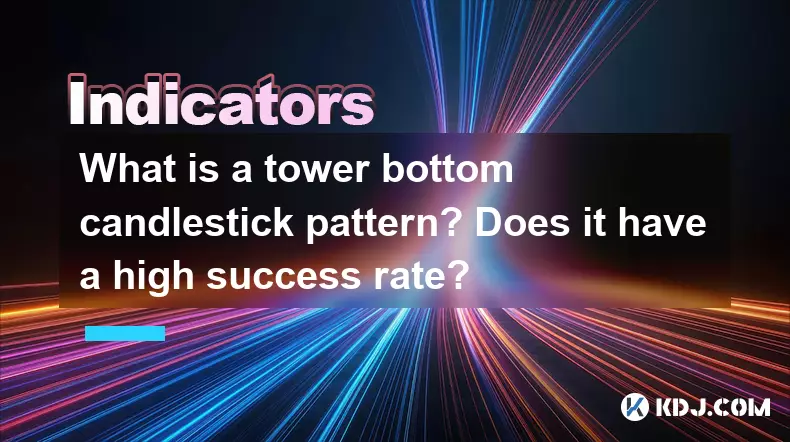
What is a tower bottom candlestick pattern? Does it have a high success rate?
Sep 22,2025 at 07:18am
Tower Bottom Candlestick Pattern Explained1. The tower bottom candlestick pattern is a reversal formation that typically appears at the end of a downt...
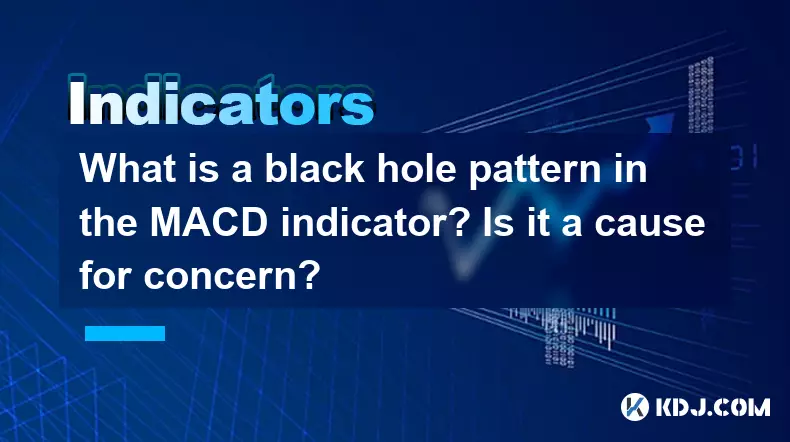
What is a black hole pattern in the MACD indicator? Is it a cause for concern?
Sep 21,2025 at 06:54pm
Bitcoin's Role in Decentralized Finance1. Bitcoin remains the cornerstone of decentralized finance, serving as a benchmark for value and security acro...

How can I use the psychological line (PSY) to determine market sentiment?
Sep 17,2025 at 02:19pm
Understanding the Psychological Line (PSY) in Cryptocurrency TradingThe Psychological Line, commonly referred to as PSY, is a momentum oscillator used...
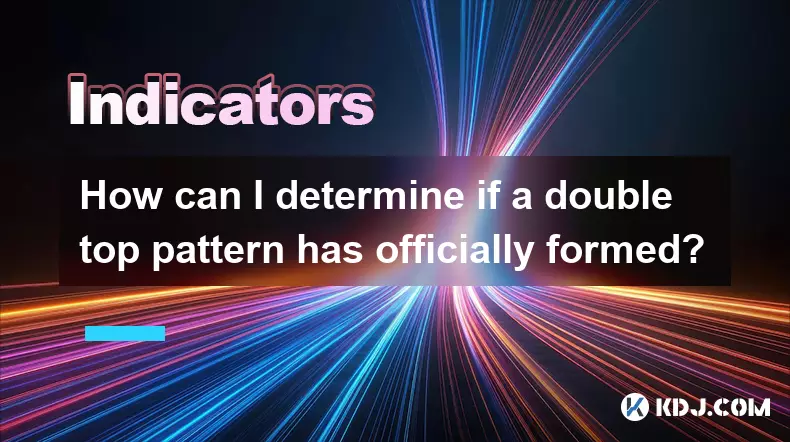
How can I determine if a double top pattern has officially formed?
Sep 21,2025 at 03:18am
Understanding the Structure of a Double Top Pattern1. A double top pattern consists of two distinct peaks that reach approximately the same price leve...
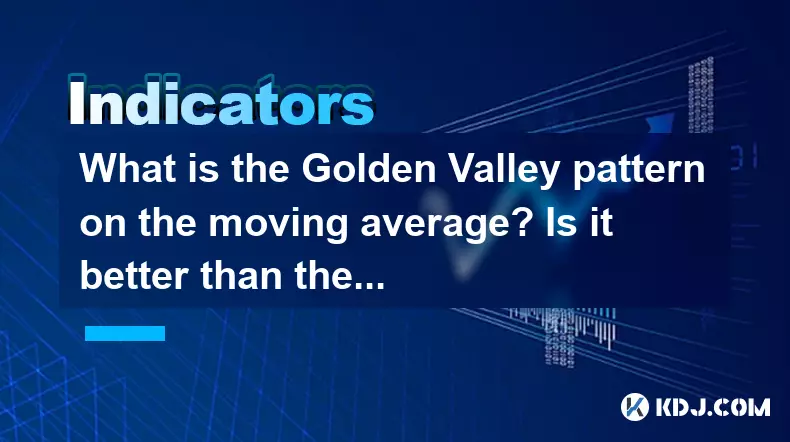
What is the Golden Valley pattern on the moving average? Is it better than the Silver Valley pattern?
Sep 21,2025 at 02:54pm
Understanding the Golden Valley Pattern in Moving Averages1. The Golden Valley pattern is a technical formation observed in cryptocurrency price chart...

What does a death cross of the RSI in the strong zone (above 50) mean?
Sep 17,2025 at 10:54pm
Understanding the Death Cross in RSI Context1. The term 'death cross' is traditionally associated with moving averages, where a short-term average cro...

What is a tower bottom candlestick pattern? Does it have a high success rate?
Sep 22,2025 at 07:18am
Tower Bottom Candlestick Pattern Explained1. The tower bottom candlestick pattern is a reversal formation that typically appears at the end of a downt...

What is a black hole pattern in the MACD indicator? Is it a cause for concern?
Sep 21,2025 at 06:54pm
Bitcoin's Role in Decentralized Finance1. Bitcoin remains the cornerstone of decentralized finance, serving as a benchmark for value and security acro...

How can I use the psychological line (PSY) to determine market sentiment?
Sep 17,2025 at 02:19pm
Understanding the Psychological Line (PSY) in Cryptocurrency TradingThe Psychological Line, commonly referred to as PSY, is a momentum oscillator used...

How can I determine if a double top pattern has officially formed?
Sep 21,2025 at 03:18am
Understanding the Structure of a Double Top Pattern1. A double top pattern consists of two distinct peaks that reach approximately the same price leve...

What is the Golden Valley pattern on the moving average? Is it better than the Silver Valley pattern?
Sep 21,2025 at 02:54pm
Understanding the Golden Valley Pattern in Moving Averages1. The Golden Valley pattern is a technical formation observed in cryptocurrency price chart...

What does a death cross of the RSI in the strong zone (above 50) mean?
Sep 17,2025 at 10:54pm
Understanding the Death Cross in RSI Context1. The term 'death cross' is traditionally associated with moving averages, where a short-term average cro...
See all articles










































































